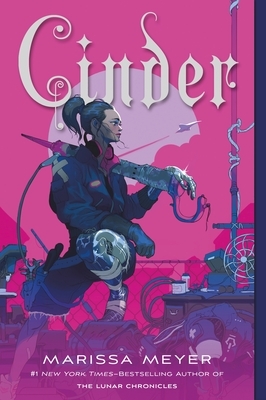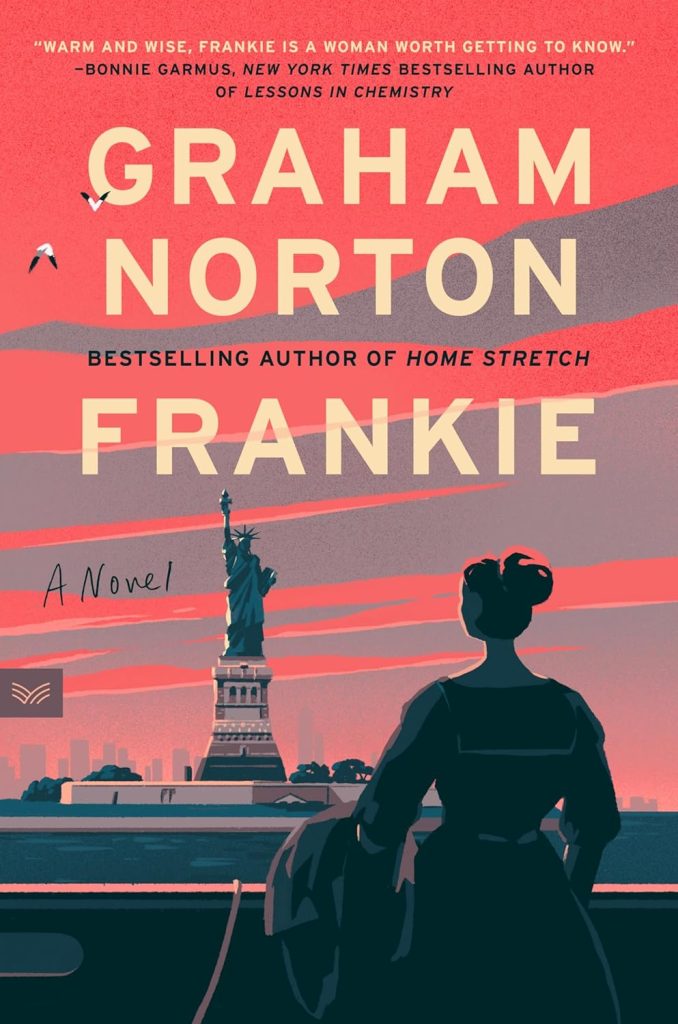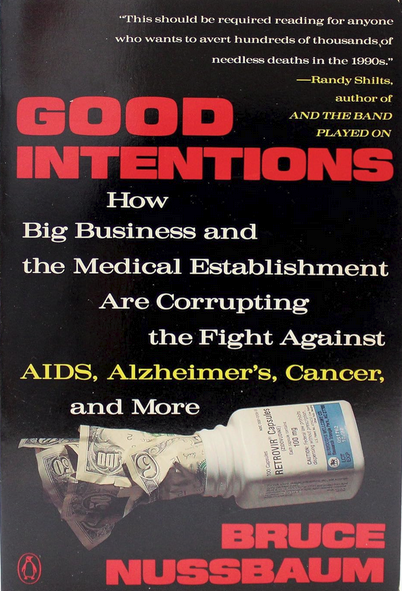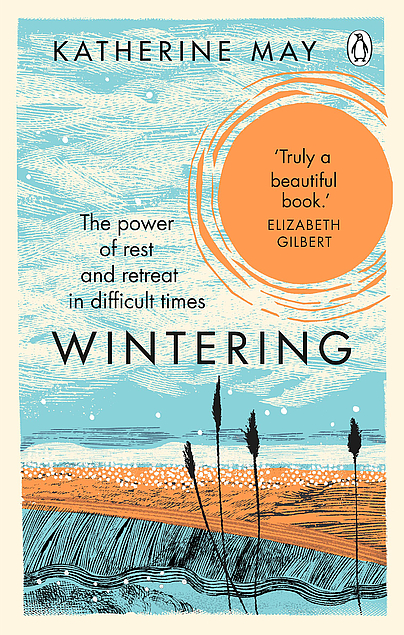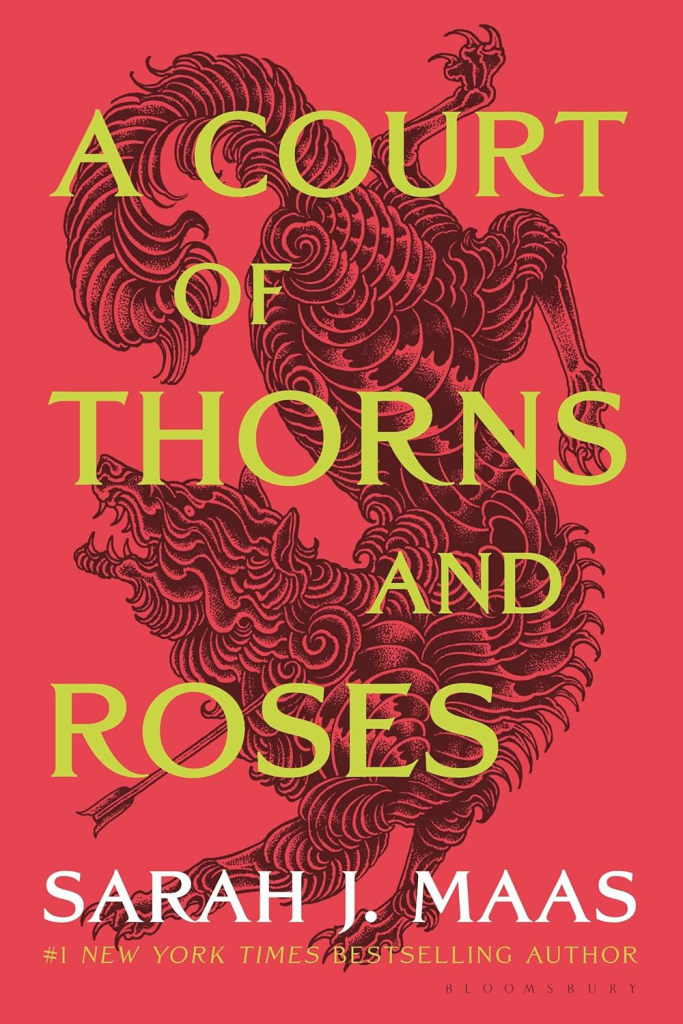Search the Blog
Categories
- Books & Reading
- Broadband Buzz
- Census
- Education & Training
- Friday Reads
- General
- Grants
- Information Resources
- Library Management
- Nebraska Center for the Book
- Nebraska Libraries on the Web
- Nebraska Memories
- Now hiring @ your library
- Preservation
- Pretty Sweet Tech
- Programming
- Public Library Boards of Trustees
- Public Relations
- Talking Book & Braille Service (TBBS)
- Technology
- Uncategorized
- What's Up Doc / Govdocs
- Youth Services
Archives
Subscribe
Tag Archives: Friday Reads
Friday Reads: There is No Place for Us by Brian Goldstone
I went on a ghost tour in Seattle several years ago. We walked down a steep set of stairs and explored the damp underground. Every nook and cranny had a dark story of fire, greed, insanity, and murder most foul. The guide was good enough to make us all jump at shadows.
As our little group walked back into the light I considered how each person’s life could change in an instant. The gift shop was an oddly bright place to sell murder and chaos. The tent city across the street seemed to fit the theme better, so I found myself staring out the window at rows and rows of tents. In my mind, each tent was another dark story.
Over the years, I saw more massive tent cities across the nation. I wondered about the real stories behind all those tents, then I stumbled upon Brian Goldstone’s There is No Place for Us: Working and Homeless in America in a free book talk webinar through The Aspen Institute. He spoke with passion and conviction, dispelling the myth that homeless people are all mentally unstable or unwilling to work. There’s more to the story.
Turns out, a good number of people are working full time but still can’t afford rent. Some lost their homes due to unexpected fire or natural disaster and weren’t able to find new housing in their budget. Goldstone humanizes the homeless crisis through real stories of people who landed in tents or cars after unexpected events. Each story represents a significant portion of the population.
In many cases, insanity doesn’t lead to homelessness, but homelessness can drive people insane. People are working full-time and striving towards work that pays a living wage, but are caught in a loop of trying to afford the schooling to build new skills while paying for rising childcare costs and trying to find an address to put on forms.
When cities make it illegal to live in your car and homeless shelters run out of beds, you get tents. The real story is that people are just trying to survive in a broken world. Life on the streets is hard, but people don’t want to become just another ghost on a tour of the city. All people should have the opportunity to survive and thrive.
Read this book if you ever walked past a homeless person and wondered about their story, but were too afraid to ask. You’ll never look at a tent the same way again.
Friday Reads: “The Kamogawa Food Detectives” by Hisashi Kashiwai
The Kamogawa Food Detectives is a quick read. The print edition is around 200 pages and the audiobook, which I listened to, runs just shy of five hours. For this reason it’s a great palate cleanser of a book, especially if you like detective stories, food, and foreign settings.
The food detective protagonists of the title are father-daughter duo Nagare and Koishi Kamogawa, proprietors of the hard to find but undeniably special Kamogawa Diner, in Kyoto, Japan. Nagare, a retired police detective, is head chef, while Koishi waits tables and assists in the kitchen as needed. Koishi is also head of the detective agency, which they run out of a back room and promote only via a one-line advertisement in a specialty gourmet magazine: “Kamogawa Diner – Kamogawa Detective Agency – We Find Your Food.”
It’s Koishi’s job to interview clients and glean as much information as possible from them about a remembered dish they wish to taste again. This is never an easy task. The emotions associated with the clients’ food memories are typically strong, but details about ingredients, preparation, and sometimes even where the dish was eaten, are sparse. That’s where Nagare, with his unique combination of detective and culinary skills, comes in.
Structurally, this book reminds me of a TV detective series. Each of the six chapters feels like an episode, featuring a different client looking for a unique dish; and each case is satisfactorily solved by the end of its chapter. Chapters also follow a predictable format: the client arrives at the restaurant and sits for an interview with Koishi; after the client leaves, Koishi shares her often scant notes with Nagare; two weeks later the client returns and is served the dish they asked to have recreated; and after they finish eating, Nagara not only explains the investigative process he followed in order to recreate the dish, he also shares his insight into why the dish holds emotional significance for the client.
If you wind up consuming this book and it whets your appetite for more, you’ll be pleased to learn that The Kamogawa Food Detectives is the first installment in a series. Originally published in Japan in 2013, it was translated into English and released in the United States in February 2024. An English-language edition of The Restaurant of Lost Recipes, book two in the series, followed in October 2024, and book three, Menu of Happiness is scheduled for release in October 2025. Bon Appétit!
Kashiwai, Hisashi. The Kamogawa Food Detectives. G.P. Putnam’s Sons, 2024.
Friday Reads: “Cinder” by Marissa Meyer
Cinder is the first book in Marissa Meyer’s young adult fantasy/science-fiction series, “The Lunar Chronicles” (and is her debut novel). This series follows classic fairy tale characters as they’re rewritten into Earth’s only hope for survival against powerful villains from a lunar colony.
Among the crowded streets of New Beijing, humans are battling a increasingly deadly virus outbreak. Cinder works as a skilled mechanic with her best robot friend, hiding the fact she’s a cyborg. As a cyborg, she could be “traded in” to be a research subject at any time by her stepmother, who threatens her so daily.
Cinder is approached by Prince Kai one day to fix his android, leading to a royal invitation (of course). Between the Prince, her beloved sister’s illness, and past secrets, she quickly finds herself in the center of an intergalactic struggle – complete with an evil Queen.
Meyer, M. Cinder. Square Fish. 2012.
The series continues with Scarlet – a spaceship pilot searching for her grandmother, Cress – an imprisoned computer hacker, and Winter – a kind and beloved Lunar princess. As the plague mutates, dangers grow, and the Queen continues to gain power, all four must team up to fight evil and save the world.



Friday Reads: The Deep by Rivers Solomon with Jonathan Snipes, William Hutson, and Daveed Diggs
The Deep is a short and profound Afrofuturist read.
The wajinru are an underwater people who live peacefully together. Yetu is the tribe’s historian—she holds their collective memory so the rest of the tribe can escape the pain of it. Each year, Yetu extends the entirety of their history to the rest of her people in a ceremony called the Remembrance. It is the only day where she does not shoulder the burden of their gruesome history alone.
Her people, the wajinru, are the descendants of pregnant women thrown off slave ships crossing the Atlantic. The lore of their survival is detailed with reverence—the babies born in the water, the whale that mothered them, the infinite renewal of changing waters.
We meet Yetu at a breaking point. She did not ask to carry the weight of her people’s pain that is now driving her towards death. She flees in the midst of the Remembrance, leaving her people thrashing with their history. We follow both Yetu and the wajinru as they both find ways to deal with the trauma of the past.
Rivers Solomon was tapped to write The Deep with experimental hip hop group, clipping., made up of Jonathan Snipes, William Huston, and Daveed Diggs, after their group had put out a song with the same name in 2017.
Listen here: https://www.youtube.com/watch?v=5EnPFsk4lOo
“Remember now or perish. Without your history, you are empty,” Yetu told them. “Everyone, shout this person’s name so they remember!”
Clipping. drew from the myth created by Detroit techno group, Drexciya. Their 1992 album, Deep Sea Dweller, and their subsequent recordings allude to a Black underwater utopia also called Drexciya, built by the descendants of the pregnant women who were thrown off of slave ships during the middle passage.
Listen here: https://www.youtube.com/watch?v=s1zhZVisJxY
Hip hop and science fiction often find their way to each other to imagine a different Black experience. Key aspects of hip hop, like sampling and reference, intrinsically honor the past while creating something new. Solomon and clipping. fold their layers of reference into a percussive and evocative prose in a way that loses nothing.
Solomon, R., Diggs, D., Hutson, W., Snipes, J. The Deep. Saga Press. 2019.
Posted in Books & Reading, Friday Reads, General
Tagged Afrofuturism, Friday Reads, hip hop, Reading, Science Fiction
Leave a comment
Friday Reads: “The Crime Brulée Bake Off” by Rebecca Connolly
I love watching cooking and baking shows. From classics like Masterchef, or more fun shows like Netflix’s Nailed It or Dropout’s Gastronauts, or YouTube content like Tasting History with Max Miller, there’s a plethora of options to choose from with different themes and vibes. But one show takes the cake, and that would be The Great British Bake Off. My friends and I will often have watch parties as the newest season airs, choosing bakers to root for as the season goes on. So when I visited my local library and saw The Crime Brûlée Bake Off by Rebecca Connolly with their new mystery arrivals, I was instantly interested and as soon as I had a chance to sit down and read it I found myself charmed by the parody it creates.
The novel follows Claire Walker, a teacher with a love for history who just learned that she will be one of the bakers on the newest season of Britan’s Battle of the Bakers. This season is set to take place on the estate of Blackfirth Park, where our secondary character and future love interest Viscount of Colburn Jonathan Ainsley lives. Claire’s peppy and quirky energy is juxtaposed with Jonathan’s more serious (and somewhat annoyed) tone every other chapter, swapping perspectives as the show goes on.
At first it seems like a simple re-imagining of the classic Bake Off show, with a few changes such as a cash prize. But after the first round of baking one of the bakers is found dead in the estate’s mill, the body found in the exact same way as the 10th Viscountess who had died mysteriously many years ago. The novel becomes a very fun murder mystery where the suspense grows alongside the budding romance between Claire and Johnathan, who are helping the lead detective look into the death and the various suspects. Some say it was the ghost of the Viscountess herself, the local government and showrunners are more than happy to say it was an accident, but they’re convinced it was a murder. But they need to prove it before the show ends, and hopefully before Claire gets sent home for a bad bake.
If you love The Great British Bake Off and enjoy a good romance mystery novel, The Crime Brûlée Bake Off makes for a fun and lighthearted read. Claire’s silly exclamations such as “crepes alive!” had me giggling, and the mystery of the murder kept me guessing. Plus, once you’re finished with the story there are six recipes in the back, each a story-relevant bake from the book. I certainly can’t wait to give one of them a try!
Connolly, Rebecca. The Crime Brûlée Bake Off. Shadow Mountain. 2025.
Posted in Books & Reading, Friday Reads, General
Tagged Book Review, books, Friday Reads, Novel, Reading, Rebecca Connolly, The Crime Brulee Bake Off
Leave a comment
Friday Reads: A Lost Lady, by Willa Cather
While I was enjoying some Barbara Stanwyck films on Turner Classic Movies (star of the month for March 2025), I saw something that surprised me—a mention of Willa Cather in the opening credits for A Lost Lady (Warner Bros., 1934). I’d heard of the 1923 book that Willa Cather wrote with that title, but I’d assumed this was a coincidence. I don’t know as much about Willa Cather as many other Nebraskans might (who might also be reading this right now—hello everyone, in the state and elsewhere, who has a Google alert for Willa Cather! You are a devoted bunch!), but I didn’t remember seeing Cather’s name associated with a relatively contemporaneous movie before.
(This 1934 movie was the second attempt to bring the hit novel to the screen. The first try was in 1924, directed by Harry Beaumont and starring Irene Rich—but don’t go looking for that version, because according to IMDb and others, there are no existing prints of that 1924 movie—it’s considered as “lost” as its title character.)
According to film critics in 1934, this second attempt to bring the book to the screen was a disappointment, despite the popular cast. The review in the New York Times suggested changing the title and removing Cather’s name from the credits, and that the film lacked “the haunting beauty of the book.” The 1934 movie was such a disappointment to Cather that it is said to be the reason there were no more movies made of her works in her lifetime.
After looking into the adaptation history, I had to pick up the book. Since A Lost Lady is old enough (1923) to be in the public domain, there are many versions online for reading or listening, as well as many reprints and editions in physical form. The Willa Cather Archive at UNL, for one, has it (and many related materials worth looking at) online.
To be fair, it would have been difficult to make A Lost Lady into a successful movie that stayed faithful to the text. The book opens with setting the physical and social scene in a way that would have been a challenge with the film technology at the time. That is soon followed, in the book, by a scene of animal cruelty and body horror that could not have made it onto the screen at the time either, for other reasons. These limitations might explain why the filmmakers re-ordered the narrative events of the text, but that re-ordering takes away an important “reveal” of some character development. Also, Nebraska, as a place, is missing from the movie entirely.
Another challenge for the film is the casting. If someone read a synopsis of the book but didn’t actually read the book, it would sound great to cast Hayes-Code-inspiring, 1930s-era Barbara Stanwyck, who excelled in playing flawed, charismatic women who would do what it takes to survive. This is what her studio and her fans would want from her performance, and they’d be rooting for her through stumbles and successes—and this is not quite what the book is about.
A Lost Lady (the book) is about a young man, Niel Herbert, who is enthralled with, and eventually disillusioned by, the charming Marian Forrester, who indeed does what it takes to survive, and Niel does not like the choices Marian makes. The book succeeds where the movie flounders, because we see Marian’s do-what-it-takes choices through the gaze of Niel—and Niel is the person with whom Cather intends the reader to identify—not Marian. Also, in the movie, Niel is the same age as Marian, which completely changes their dynamic.
This difference gives nuance to the book, while the movie becomes an ineffective morality play (with a very different ending). One could argue the first half of the movie is more fair to Marian than the book ever is (and then falls apart in a frustrating fashion that I had to re-wind twice so make sure I wasn’t missing something), but, to be fair, the book is never really trying to make excuses for Marian. It’s up to the reader to complete any circuit of sympathy and understanding for the choices she feels she must make. I think the reader can handle this responsibility better than Niel does.
Reviews of the book see symbolism that don’t follow through to the film adaptation. In the book, the reader can see how Niel might represent the American westerner of the era, who’s been promised a promise—a future that’s as bright as one wants it to be. And the Marian of the book might represent the American West—charming, wild, just out of reach, something the protagonist could fall in love with the idea of—but which can’t live up to unreasonable expectations projected upon it, at least not for a member of the current generation, born too late to enjoy what the previous generation seems to have handed to them (of course, it wasn’t handed to them either, and not in any lasting way).
In that sense, A Lost Lady, published in 1923, is an emblematic story for the 1920s, even though much of the action happens earlier. (Correspondence between Cather and F. Scott Fitzgerald noted the similarities of Marian Forrester and Daisy Buchanan, another Roaring Twenties woman-as-embodiment of male desire-turned-to-disillusionment.) Having said that, it’s still a timeless story. Part of growing up is realizing that some things you thought you wanted just won’t make you happy, partly because you didn’t really understand them in the first place.
A Lost Lady is a quick read, or listen—and well worth your time, whether you’re new to Cather or not. (Just remember you don’t actually have to agree with Niel about everything, even if you do agree with him about some things.) Even as such a slim volume, it is lush with the landscape-as-place and dynamic domesticity for which Cather is known and celebrated.
The un-lost 1934 movie might be only for the Barbara Stanwyck completist—if you’re willing to put up with the inconsistencies of her character, and the unfortunate stereotyping of one of the house staff characters, which is more extreme than in the book. I have to note that the Orry-Kelly wardrobe is amazing—it might be the best part of the movie.
Cather, W. (1923). A lost lady. Alfred A. Knopf.
Some additional notes:
Of interest to Barbara Stanwyck and classic film fans: look at this Warner Brothers pressbook for the 1934 movie, courtesy of the Wisconsin Center for Film and Theater Research and The Internet Archive
Also: did you know Barbara Stanwyck married a Nebraska-born fellow Hollywood star a few years after this movie? That would be Robert Taylor.
Of interest to Willa Cather fans who are also Ethel Cain fans (there’s a definite crossover here, if you know, you know): Ethel Cain is going back out on tour in 2025! No stops in Nebraska this time.
Posted in Books & Reading, Friday Reads, General
Tagged Friday Reads, Reading, Willa Cather
Leave a comment
Friday Reads & BookFace Friday: “Frankie” by Graham Norton
You’ll want to get to know this #BookFace!
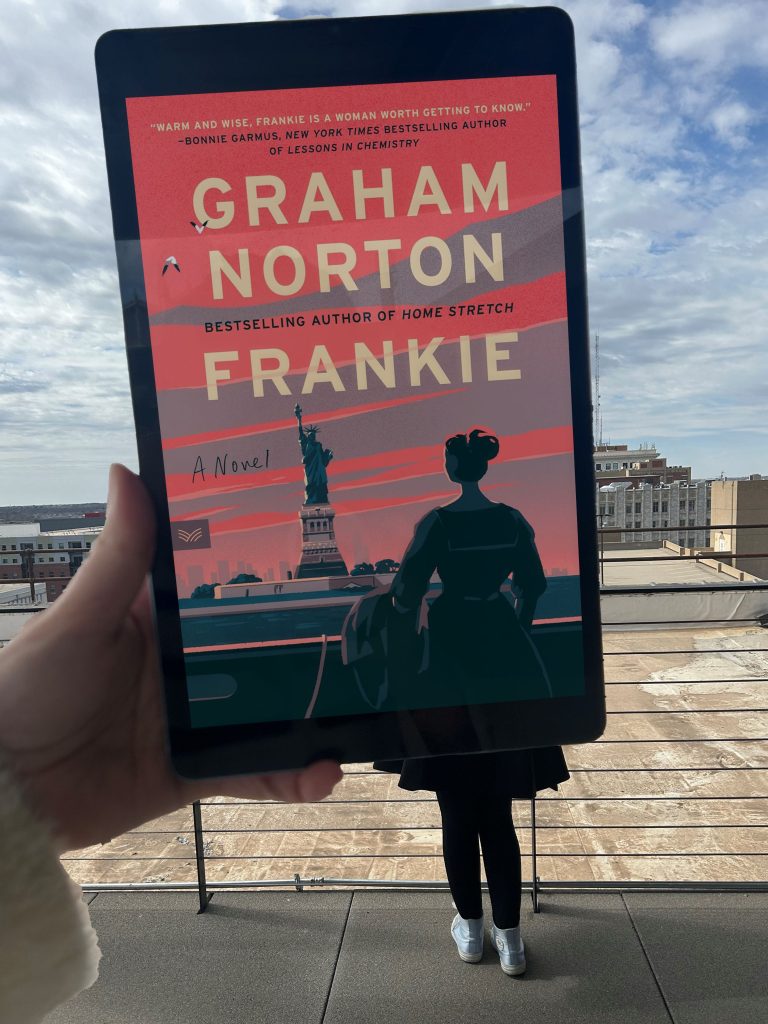
I am always interested in anything Graham Norton writes and when his fifth audio book of fiction was released with Norton’s narration, I saved it for a long weekend of listening. Graham often sets his books in Ireland but this book expands to London and New York City following the very full life of the title character from age 10 to her 80s. The story begins with Irish born Frankie recovering from an injury with the assistance of a home health care worker named Damian in her London flat. Damian is also Irish and the two enjoy an easy rapport. Frankie’s home is filled to the brim with souvenirs and boxes of memorabilia that provide easy conversation starters. As Frankie tells the stories of her past, both listeners benefit therapeutically. In one poignant moment, Frankie asks Damian if his heart has ever been broken. His answer is naive and honest, even more so given Frankie’s history. Frankie regains her mobility and Damian departs for other assignments but not until they celebrated their newfound friendship.
I found myself talking about this book to my reader friends but never did I say, this could be something they might like to read. The Irish authors I’ve read have a definite tone to their work. It’s pragmatic and practical. The characters know that if life is going smoothly, they ought to appreciate it because it will all come to an end sooner rather than later. There are moments of great passion and love in Frankie’s life, but also tragedy and heartbreak. It’s the unequal ratio toward more sadness that makes it Irish fiction in my opinion and that can be a tough sell. Even so, I will continue to read Norton’s works because he is a brilliant storyteller and narrator. This was my favorite of Graham’s novels and I missed Frankie for days after I finished the book.
Norton, Graham. Frankie. HarperVia, 2025.
Love this #BookFace or #FridayReads? Check out our past posts on the Nebraska Library Commission’s Facebook page!
Posted in Books & Reading, Friday Reads, General
Tagged bookface, bookfacefriday, Frankie, Friday Reads, Graham Norton
Leave a comment
Friday Reads: “The Berry Pickers: A Novel” by Amanda Peters
This historical fiction novel set in 1960s New England follows two families whose paths cross alongside a dirt road and are then forever entwined. Joe and his family are Mi’kmaq, they travel down from Nova Scotia every year to work the berry fields of Maine. His day begins as any other but when he fails to keep an eye on his four year old sister Ruthie, he will spend the rest of his life trying to atone for her disappearance.
Norma has grown up in a sheltered and isolated suburban home with a mother that always seems afraid to let her out of her sight. She doesn’t remember much of her early childhood, but her parent’s distress when she asks about it or mentions her imaginary friend Ruthie has taught her to keep questions to herself. As she grows up her assumption that she’s adopted, and her parents never wanted to tell her will be shaken by a more awful truth. The Berry Pickers follows the aftermath of one family’s tragedy and another’s sins as both try to move forward after the loss of a child. Peter’s weaves these two dramatically different family stories together, exploring themes of family, guilt, and identity. It was the winner of the Andrew Carnegie Medal for Excellence in Fiction, and the 2024 selection for One Book One Lincoln by Lincoln City Libraries.
Peters, Amanda. The Berry Pickers: A Novel. Catapult. 2023.
Posted in Books & Reading, Friday Reads, General
Tagged Alex Michaelides, Book Review, books, Friday Reads, Novel, Reading, The Maidens
Leave a comment
Friday Reads: At Wit’s End: Cartoonists of The New Yorker – Photographs by Alen MacWeeney Words by Michael Maslin
The New Yorker magazine celebrates its 100th anniversary this year. At Wit’s End is perfectly timed to showcase cartoonists and cartoons that have been a consistent part of the magazine since its inception. Wit’s End is a truly fun book and one that diverts from books many of us typically read. The New Yorker has provided readers with hundreds of thousands of cartoons from over 700 cartoonists that delight, capture, and depict the happenings of the time. Whether pop culture, politics, or other, The New Yorker cartoonists drill into topics of the day with skilled artwork and clever captions. With or without captions, cartoonists tell stories within the art of a single-frame cartoon.
It might be that I’ve been a decades long subscriber to The New Yorker magazine for its cartoons and covers. And that may be why I had to get a copy of At Wit’s End after reading a review. Every once in a while, it is fun to spend time with a book that amuses and fascinates. I found that in this book.
In At Wit’s End, Michael Maslin, a cartoonist himself, profiles 50 some of The New Yorker cartoonists selected from the hundreds whose cartoons have been published in the magazine over the past century. Some of the cartoonists have been contributors over many decades and some are newer and more recent magazine cartoon contributors. Ed Koren, for one, is among just a couple of dozen who have sold more than two thousand drawings. A typical reader likely knows little about the cartoonist but will readily recognize their style. That’s why it is a joy to learn about the cartoonist behind the cartoon aptly profiled by Maslin. The cartoonists are uniquely creative with atypical personalities, even eccentric perhaps.
The cartoonist profiles are complemented with Alen MacWeeney’s photographs and a sampling of single-panel cartoons depicting the cartoonist’s style. The New Yorker readers no doubt have their favorite cartoonists. Mine include George Booth, Charles Addams, William Steig, David Sipress, James Thurber, and Robert Mankoff (The New Yorker cartoon editor for over two decades), and there are many more. For the record, mentionable are a couple of well-known cartoon captions – Peter Steiner’s “On the internet, nobody knows you’re a dog” and Bob Mankoff’s “No, Thursday’s out. How about never – is never good for you?”
From 1997-2012 The New Yorker published an annual Cartoon issue. The magazine’s Cartoon Caption Contest began in the 1998 Cartoon issue and has continued as a weekly feature since 2005. The feature, near the back pages of the issue, includes the new contest cartoon, three finalists, and the winning caption.
Cartoonist Michael Maslin is a notable writer as well and whose Ink Spill Blog is “The go-to chronicle of all things New Yorker cartoon.” Photographer Alen MacWeeney is an internationally celebrated photographer whose photographs accompany cartoonist profiles in At Wit’s End.
MacWeeney, Alen, and Maslin, Michael, Alen. At Wit’s End: Cartoonists of The New Yorker. Clarkson Potter, 2024.
Friday Reads: Mastering the Art of French Eating by Ann Mah
When Ann Mah moved to Paris in 2008, she envisioned three glorious years of exploring the French cuisine. Living in Paris was a dream come true for Ann, a freelance food writer, and she had always imagined exploring it with her “favorite person,” her husband. The couple was accustomed to moving frequently, but after only a month in Paris, her husband, a foreign diplomat, was called to serve in Baghdad for a year. Ann is suddenly forced to change her expectations and explore France on her own.
Mastering the Art of French Eating: From Paris Bistros to Farmhouse Kitchens, Lessons in Food and Love focuses on Ann Mah’s first year in Paris. Each chapter is devoted to a different French dish like steak frites, crepes, soupe au pistou, and cassoulet. She also explores the history of each dish and connects with those who make them today. Recipes are included if you want to make them at home.
Her need for crepes reminded me of my Chinese mother, who can’t go more than a day without a bowl of rice, or my Italian friend Gianfranco, who requires regular infusions of pasta, or even Didier, who once told me that he missed cheese so much on a trip to South Africa that he ate an entire wheel of Camembert on the airplane home. Crepes, I realized, were a Breton’s comfort food.
The strengths of this memoir are in the exploration of French cuisine and its history, but it is also about navigating loneliness and independence, and exploring identity. Although Ann has a lot of experience traveling and living abroad, she is not comfortable doing those things alone. Her experience has always been with a parent or partner. At times I wanted to reach into the book and shake her as she wastes a lot of time wallowing in loneliness. She struggles to find her own joy, but by connecting with others, she also learns about herself.
How does a cross-cultural seesaw affect a person’s identity? Perhaps if I learned more about Alsace and its cuisine, I could better understand what might happen to me, an American of Chinese ethnicity who changed countries every three to four years.
If you want to explore more of Ann Mah’s writing, you can also check out two of her novels inspired by France in Nebraska Overdrive.
Mah, Ann. Mastering the Art of French Eating: From Paris Bistros to Farmhouse Kitchens, Lessons in Food and Love. Penguin Books, 2013.
Friday Reads: And the Band Played On/Good Intentions: How Big Business and the Medical Establishment are Corrupting the Fight Against AIDS
This week’s FR is a twofer, but they are interconnected and the only other way to do this in a non-twofer fashion would be to post about the first book today, then the second one next time I’m up (which is June 27). Forget that. First up, at 656 pages, And the Band Played On takes some commitment, but is a relatively easy read. Author (San Francisco Chronicle reporter) Randy Shilts died from AIDS related complications (Kaposi’s sarcoma and Pneumocystis pneumonia) at the age of 42 (in 1992). This book skips between the media coverage (and non-coverage) of the epidemic, the medical community’s research and response, the political response/non-response, and individual stories of those that suffered and succumbed to the horrible disease (or had friends or family that succumbed). Shilts spends time covering the discovery of what was known in the early days as “gay cancer”, the likely proliferation and spread through bathhouses, the scientific research (many ego clashes at public health institutions), community activists, and the push/pull with government research and funding. The essential discovery by French researchers was plagiarized by American scientists, taking credit for the discoveries of the French. After reading the book, which abruptly ends without much time spent on repurposed drugs and the development of new ones, I found myself disappointed in the public health system yet again, but optimistic about the rogue frontline doctors and community activists who fought the large bureaucracies. I asked, what happened next? What about the FDA, the buyer’s clubs, and what about AZT? None of that was covered much by Shilts in depth, so I reached out and found the rest of the story in Good Intentions: How Big Business and the Medical Establishment Are Corrupting the Fight Against AIDS, by Bruce Nussbaum. I had to order it on ILL and pay the $3.50 fee. It was worth it, but every library should carry these two works for narratives about the AIDS epidemic.
Nussbaum’s work is an informative continuation of the story, but no less depressing. Many of the same actors from the work of Shilts appear, but instead of the push/pull between doctors jockeying for credit to discover things in the lab, the push/pull largely takes place between federal health agencies, pharmaceutical manufacturers, frontline doctors, and community organizations (notably ACT-Up). This clash of egos and scientific ineptitude led to many more needless deaths and suffering. One of the main villains is the NIAID, headed by Tony Fauci, who quickly proved his agency was in way over their head. NIAID took over from the National Cancer Institute (NCI), because AIDS is obviously an infectious disease, and it was hard for the NCI to argue that point. The problem was that NIAID had never been involved with drug development, and it took the agency years to figure things out. NIAID got a brief reprieve when Fauci poached more experienced oncologist Daniel Hoth from the NCI. NIAID spent copious amounts of tax dollars, placing its chips solely on AZT, like some drunk playing Big Red at the craps table. Those taking AZT in the early days (large doses) needed blood transfusions to stay alive, because it caused anemia and toxicity to bone marrow.
Community doctors became effective at treating the symptoms of AIDS, by utilizing off-label drugs, and in some cases patients cooking up their own DIY style. Many of these doctors treated specific AIDS related ailments, such as Kaposi Sarcoma (KS), a rare cancer, or PCP (pneumocystis pneumonia). The problem with some of the therapies (notably AL-721) was the fact that they often weren’t made to specifications when manufactured at home, so their efficacy was difficult to determine. And, because there was little money to be made from their sale (AL-721 is a lipid mixture extracted from egg yolks), this ensured there were no clinical trials or widespread commercial development. The FDA was often blamed for holding up the development and approval of new drugs, although there was plenty of blame to go around. At a Congressional hearing, when asked by Rep. Nanci Pelosi (representing San Francisco), what he would do if he was an AIDS patient, waiting for the Federal Bureaucracy to approve treatments, Fauci (who’s agency had been allocated over $374 million by then to develop treatments) responded:
“I probably would go with what would be available to me, be it available in the street or what have you.”
What’s largely disappointing is that the process for testing, approval, and bringing drugs to market hasn’t changed much. Nussbaum summarizes this in his Epilogue:
“In the case of the disease AIDS, and probably in cancer, heart disease, Alzheimer’s, and others, a very small number of PIs [Principal Investigators – top scientists at medical schools and hospitals who ran research trials on drugs, and were critical of anyone else doing research outside of that framework], a dozen or two, have enormous power that they misuse. … nowhere is there accountability. The NIH extramural programs, especially NIAID’s AIDS Program, may well become known as the HUD of the nineties, in which billions of taxpayer dollars have disappeared into the private projects of a handful of scientists who insist they know what is best for the health of the country. It is simply not true; they don’t.”
Shilts, Randy. And the Band Played On. St. Martin’s Griffin, Revised Ed. 2007.
Nussbaum, Bruce. Good Intentions: How Big Business and the Medical Establishment Are Corrupting the Fight Against AIDS. Atlantic Monthly Press. 1990.
Friday Reads: Startup Communities by Brad Feld
Everyone has their thing they completely nerd out over. For me, that’s ecosystem building. Ecosystems are how people come together to solve problems and drive change in the world. I’ve dug into problem-solving ecosystems, innovation ecosystems, tech ecosystems, startup ecosystems, and how each of these ecosystems overlap and work together in different ways.
Today’s Friday Reads is all about how businesses, universities, colleges, nonprofits, government agencies, and libraries come together to cultivate and support entrepreneurs along a difficult journey. The fun fact is that libraries are not featured very heavily in the book, but we do play a role. Makerspaces, innovation spaces, entrepreneurial resource referrals, guest speakers, workshops, meeting spaces, and so many other ways.
This book helped me better understand how the ecosystem works overall. It could help you too. When libraries understand the process aspiring entrepreneurs take to launch a startup business, and can identify partner organizations within the entrepreneurial ecosystem, it’s easier to identify unmet needs where the library can help. This increases the value of the library to the business community, and adds new grant and funding opportunities.
I read this book many moons ago, but I still revisit it to refresh myself and spark new ideas. If you’re looking for new ways to engage with your community, especially in the world of workforce development, give Startup Communities a read. Let me know if you want to nerd out with me about ecosystems when you’re done. I have some stuff for you.
P.S. I try not to inflict my niche interests on the wider world too much, but this week, I let my nerd flag fly! Join me.
Friday Reads: “Red Sonja: Consumed” by Gail Simone
In the spirit of Valentine’s Day, I’ve picked something red for this week’s Friday Reads: Gail Simone’s debut novel, Red Sonja: Consumed.
But, Sonja’s flowing red hair is really the only thing this book has in common with the day. While there are romantic relationships in this story, it’s definitely not a romance novel. Far from it. This is a beautifully written, classic sword and sorcery tale.
Full disclosure: Gail Simone is my favorite comic book writer. I will read anything she writes. From Wonder Woman to Secret Six to Batgirl to Uncanny X-Men, and yes, Red Sonja, I haven’t been disappointed yet. She is well-known for reimagining established characters by telling insightful, deep stories with strokes of humor and some surprises.
That same writing style comes through in Red Sonja: Consumed.
With the flashbacks to Sonja’s past, and her tragic childhood, Simone creates a riveting character study of grief, loss, and overcoming immense hardship. The adult Sonja must travel back to her homeland of Hyrkania, to stop an unknown evil that is attacking her people. She is brash, snarky, and thoroughly enjoys every fight she gets herself into. And her warhorse, Sunder, is the best sidekick, fighting right there by her side.
The first half of the novel gradually sets up the exciting second half. It may feel like things are moving along too slowly, but when everything comes together later on, it’s totally worth it.
Yes, there are violent scenes and bloody battles. Oh, look at that. More red! 😉 What do you expect from the She-Devil with a Sword? But, that’s not all. Ultimately, Red Sonja: Consumed is a fun, fierce tale – full of intrigue, action, magic, and monsters.
Friday Reads: I’m Sorry You Got Mad by Kyle Lukoff
One of the picture books School Library Journal included on their “Best Picture Books of 2024” list is I’m Sorry You Got Mad by Kyle Lukoff. Learning how to apologize, and mean it, is hard, and Jack is not yet convinced he should. But the teacher expects it.
Right off we know Jack must write a note of apology to Zoe, but the teacher must approve it first. His third attempt is the title of the book and he must try again. He is angry while working on the note and the other students have no trouble realizing it.
Through the rejected notes the reader/listener learns that Zoe’s castle was knocked over. And then we begin to learn the reasons this happened.
Finally Jack writes an acceptable note, and Zoe replies with a thank-you note. Maybe tomorrow they will build a castle together.
The artwork adds greatly to the story. In one illustration the pencil sharpener is roaring as Jack uses it – with a big frown on his face, the other students all noticing him. The reader/listeners can tell he is still mad. This is the complete package of story and art – and a great way to let young ones see someone practicing… fighting it… trying… and finally getting it right.
Lukoff, Kyle. I’m Sorry You Got Mad. Dial Books, 2024.
Friday Reads: Wintering: The Power of Rest and Retreat in Difficult Times by Katherine May
Winter. Nebraskans are well-acquainted. Even in the milder times, like this year and the last, winter is a frigid creep around the fringes of our scarves, skulking under the brims of our hats.
There is an instinct to resist winter. It is, after all – even to those of us who love the cold – an inconvenient season. Our commutes become more challenging. Daylight is fleeting. And if we are not resisting winter, then we are doing our best to ignore it. After all, in an era of thermostats and DoorDash, many of us are not interrupted by the whole of winter. Unlike our predecessors throughout most of human history, we do not have to rely on a stockpile of firewood, or animals that also feel the sting of wind chill, or cans and jars preserving our fall harvest. This has changed what winter has become in our societies.
After experiencing a series of upturnments in her life, Katherine May set out to explore ways to survive winter. Not just the physical season of winter – although she spends quite a bit of time in the uppermost northern regions of the planet – but also the spiritual and mental winters that come from burn-out and illness.
After her husband’s sudden hospitalization, followed by the onset of her own chronic, unexplainable illness, May faces what all of us struggle with at one point in our lives: the realization that we need to rest, with no structured culture of rest and few ideas about where to begin. She wrestles with the guilt of “doing nothing,” even though what she is actually doing is allowing her body the time and space it desperately needs to recover.
May refers to this time of her life as a “wintering.” She uses winter as a central thesis of living more aligned with a seasonal perspective, with periods of fertility and fallowness. We are tempted to see time and life as a long, linear line. Birth and death are points A and B. Our jobs are 9 to 5. It leads to a very individualistic, self-referencing way of living. Perhaps we would be better served by viewing it all – our lives, time, the seasons – as interconnected cycles.
Winter brings with it discomfort, darkness, cold. In nature, winter is a time to be survived – however, as May uncovers, much of nature is centered around preparing for winter. Neither the door-mouse nor deciduous trees survive by staunchly ignoring winter, nor do they let winter take them by surprise. There is no “keep calm and carry on” philosophy (May is British). Instead – at the risk of anthropomorphism – nature accepts the reality of the changes of the season, and adapts. Some animals hibernate. Some tree lose their leaves. It is a period of dormancy, to weather the lean times of few resources.
May also explores how northern human cultures adapt to the long periods of frozen darkness that comes with living in the Arctic Circle. May explores the geothermal pools of Iceland, the customs of the indigenous Sámi of Norway, and the sauna culture of the Finns. These groups seem to share amongst each other the belief that winter is not something to be overcome, but something to be embraced in order to weather it. And it is weathered most of all by relying on community.
May, Katherine. Wintering: The Power of Rest and Retreat in Difficult Times. Riverhead Books, 2020.
Friday Reads, The Oxygen Farmer, by Colin Holmes
The Oxygen Farmer by Colin Holmes is set in the near future, where the Moon has a station with gravity, and a Mars expedition is being prepared in the moon’s orbit. An astronaut, Mil (Millennium) Harrison, nearing 80 is an oxygen farmer, creating oxygen for the habitat, and the Mars mission. On a delivery, his transportation, a “spider truck” breaks down, and after discovering help is many hours away, decides to take a short cut home, to pick up the part he needs. He goes through a part of an “exclusion zone”, where people aren’t supposed to go, although he has no idea why. It’s not historic, like the others. While there, he finds a hidden, underground base, which is radioactive. He scrambles out, and heads home. Of course, he has to report it. Eventually. Being a solitary, crotchety, legend, even he has to follow the rules. He helped write them, after all.
His discovery sets in motion so many events. The long-buried secret on the moon shouldn’t exist. His granddaughter first slated for the Mars mission, is sidetracked to the moon, for helping him do research on it. When he’s sent to Earth for therapy an attempt is made on his life. A second occurs on the moon, in a far more secure environment, with the loss of a shuttle, and all aboard.
It’s a really good read, and while there is tech, it’s not tech heavy. Mil is a surprising choice for the hero, and his family, and girlfriend, a dr.; all the women’s characters are well done. The plot moves quickly. The family dynamics and history are also interesting, adding depth to what could have been a hard science only adventure. While there are a few moments that are predictable, especially if you’ve read a lot of intrigue/spy type books, there’s a lot here that’s interesting, and kept me reading.
The Oxygen Farmer, Colin Holmes, ISBN 9780744306675, Camcat Publishing,
Posted in Books & Reading, Friday Reads
Tagged Friday Reads, mystery, Science Fiction
Leave a comment
Friday Reads – The Extraordinary Disappointments of Leopold Berry by Ransom Riggs
Leopold “Larry” Berry is average, perfectly average, if you believe the results of his aptitude test given by the pricey college admissions counselor his father hired. And in the Berry household “average” equates to “failure”. The boy is a dreamer, spending his free time tinkering with his late mother’s old car and recreating scenes from an old TV show he found on VHS. Absolutely hopeless!
What Larry’s dad doesn’t know is that the old TV show, “Max’s Adventures in Sunderworld”, is not merely a corny, poorly-filmed fantasy series. It’s also one of his only connections to his mom, who died when Larry was 12. But Larry is starting to suspect that Sunder is more than make-believe; could it be a real world that exists below (or next to? inside of?) his hometown of Los Angeles? Lately, it seems the line between Sunder and the real world is blurring. Larry is seeing things that don’t (or shouldn’t) exist in his world. Worried that he is losing his mind, Larry confesses his experiences to his best friend Emmett, and the two set off to find out why Sunder is revealing itself to Larry. Will they find something truly extraordinary? Or will it just be another in a long list of extraordinary disappointments?
This is the first book in a new Young Adult fantasy series, Sunderworld by Ransom Riggs, the author of the Miss Peregrine’s Peculiar Children series. The second book will be released in fall 2025.
Riggs, Ransom. (2024). The Extraordinary Disappointments of Leopold Berry. Dutton Books for Young Readers.
Posted in Books & Reading, Friday Reads, General
Tagged art history, art theft, books, Da Vinci, Friday Reads, middle grade, Mona Lisa, narrative nonfiction, Reading, True Crime
Leave a comment
Friday Reads: “The Hazelbourne Ladies Motorcycle and Flying Club,” by Helen Simonson
Helen Simonson’s latest novel, The Hazelbourne Ladies Motorcycle and Flying Club, is set in a fictional British seaside town, in the immediate aftermath of World War I. Its main protagonist is Constance Haverhill, a capable young woman of modest means, who spent the war years managing the estate of her mother’s childhood friend, Lady Mercer. Now that war is over and men are returning, Lady Mercer has informed Constance her services are no longer needed; also, Constance will need to move out of the cottage she’s been living in to make room for the new estate manager’s family. As a temporary courtesy, Constance has been asked to accompany Lady Mercer’s mother, Mrs. Fog, on holiday, but once this interlude is over she will be out of a job and a place to live.
Given its setting and subject matter, this could have been a much grittier book. There are oblique references to the population’s overall gauntness, mentions of crippled soldiers begging for alms at London railroad stations, and multiple accounts of family members lost to influenza. Instead, Simonson ensconces her characters in the charming resort community, Hazelbourne-on-Sea, and directs them in what book publicity material calls “a timeless comedy of manners.”
To pull off this production, Simonson enlists an extensive cast of supporting characters, representing many ranks of British society. There’s Constance’s new friend, Poppy Wirrall, the trouser-wearing daughter of a local baronet, who runs the titular motorcycle club in collaboration with women she served with as a dispatch rider during the war. (She’s also organized Wirrall’s Conveyance, a motorcycle taxi and delivery service to provide employment for less well-off members of the club.) There’s Poppy’s brother Harris, a morose former Royal Flying Corps pilot who lost a leg in battle, and Jock Macintyre, his mechanic, who survived the war but turns to drink upon losing his wife and daughters to influenza. There is Kumar Pendra, an RFC pilot from British India, who notes to Constance that service members from countries with dominion status (“the Anzacs, the South Africans, and even the Chinese Labor Corp…”) receive more favorable post-war treatment than those from colonies like his, which are agitating for home rule. And there is Percival Allerton, a wealthy American engaged to Lady Mercer’s daughter, Rachel, who is concerned Mrs. Fog’s renewed friendship with the de Champney siblings, rumored to be “of mixed bloodline” even though they are the children and acknowledged heirs of a prominent Barbados sugar planter, will damage his family’s reputation.
Together, through clever dialogue and revealing interactions, these characters—some wittingly, others unwittingly—bring to life the social and familial upheaval caused by war and epidemic. You have an old guard adamantly attempting to restore pre-war hierarchies of race, gender, and class; emotionally and physically damaged soldiers whose status as landed gentry no longer guarantees them employment, fiancées, or respect; families decimated by influenza; and women who embraced new jobs and freedoms during the war, only to be laid off and sent home now it’s over.
As expected, characters mostly allude to their consciousness of these rifts and inequities indirectly, through droll and circumspect dialogue. Nevertheless, it is clear who is embracing change, who isn’t, and what some of the collateral damage will be. This book is recommended to readers who appreciate a British sensibility, historical fiction without too much grit, and social commentary in the tradition of Jane Austen.
Simonson, Helen. The Hazelbourne Ladies Motorcycle and Flying Club: A Novel. The Dial Press, 2024.
Friday Reads: A Court of Thorns and Roses, by Sarah J. Maas
Recently I was with one of my daughters, and asked her what she was currently reading. The conversation that followed was all about the book genre that both my daughters have fallen completely in love with: Fantasy Romance. In general this is not a genre I’ve been drawn to, but they are so enthusiastic about it I thought I would give one a try. A Court of Thorns and Roses was the one recommended I read first, so I jumped out of my comfort zone and read something different. I will admit that it was a fun read, with faeries, demons, magic, and adventure galore. I both read and listened to it, and enjoyed both. Sarah J. Maas is an excellent writer, and it was easy to imagine the settings, characters, and story.
“When nineteen-year-old huntress Feyre kills a wolf in the woods, a terrifying creature arrives at her house to demand retribution. She is dragged away from her family to a treacherous magical land she knows about only from legends. There, Feyre discovers that her captor is not truly a beast, but one of the lethal, immortal faeries who once ruled her world. At least, he’s not a beast all the time. As she adapts to her new home, her feelings for the faerie, Tamlin, transform from icy hostility into a fiery passion that burns through every lie she’s been told about the beautiful, dangerous world of the Fae. But something is not right in the faerie lands. An ancient, wicked shadow is growing, and Feyre must find a way to stop it or doom Tamlin—and his world—forever. “
A Court of Thorns and Roses is the first in a series of five books. Ms. Maas has written four series in the Fantasy Romance genre, and there are other authors to choose from as well: Rebecca Yarros, Raven Kennedy, and Callie Hart just to name a few. There are also titles in this genre available to our Talking Book and Braille patrons–just search in BARD, or call your reader advisor. Enjoy! **Synopsis courtesy of Amazon and Audible.
Friday Reads: “The Third Gilmore Girl” by Kelly Bishop
Best known as Emily Gilmore, the mom from Dirty Dancing, or Sheila from A Chorus Line, Kelly (Carole) Bishop has been an icon in both Broadway and Hollywood for over sixty years.
Bishop tells stories of her early days as a ballet dancer, how she broke into Broadway then moved into acting, and the many ups and downs throughout her career (which includes a Tony award) and personal life. Her longtime friendship with Amy Sherman-Palladino (writer) led to additional roles on both Bunheads and The Marvelous Mrs Maisel. She shares a few behind-the-scenes anecdotes from her time on Gilmore Girls and stories about her friendships with Lauren Graham and Edward Herrmann. However, these come later in the book. Her memoir is so much more than her role as Emily Gilmore – sharing her theatrical life, lessons from both of her marriages, love of animals, and marching for women’s rights.
Kelly narrates the audio version and it feels like friends chatting about old memories.
Bishop, Kelly. The Third Gilmore Girl. Gallery Books. 2024.
New York Public Library Digital Collections: Photos from A Chorus Line [1975]


